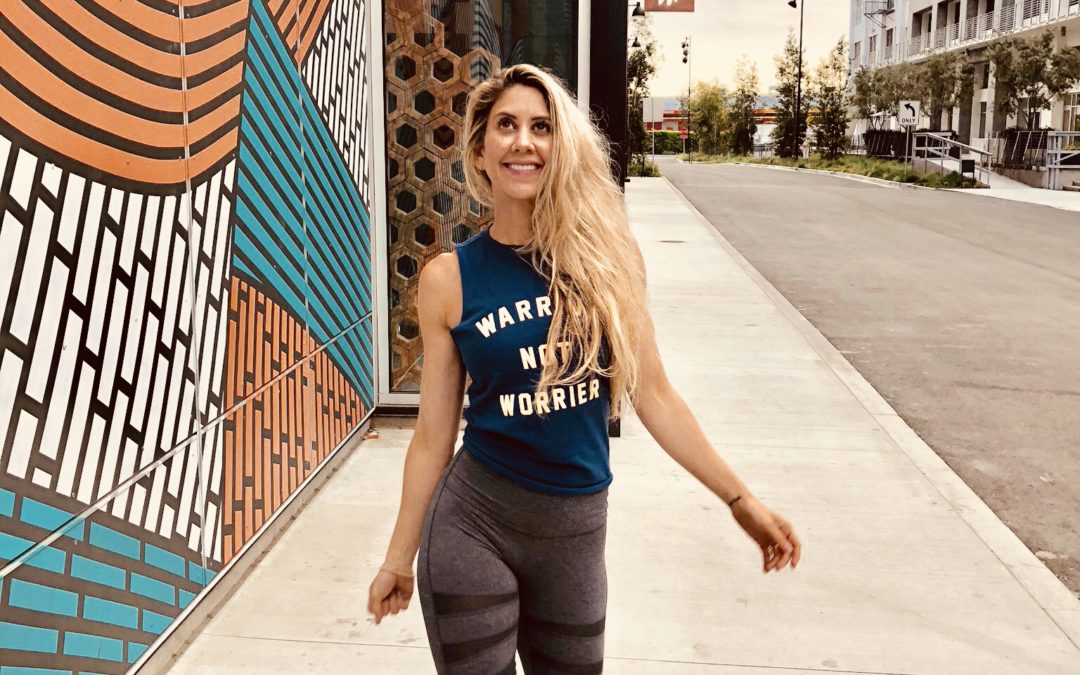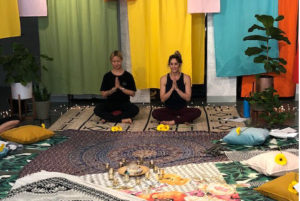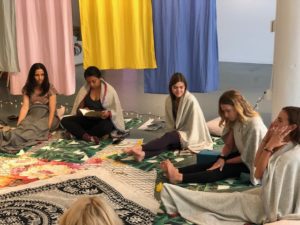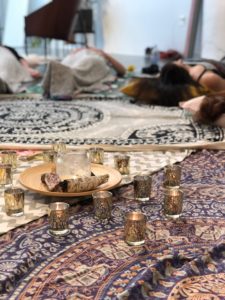
4 Reasons Why June is a Wake-up Call
June is a superpower month. Not only is it one of those cute 30-day months (30 days hath September style), but is also the one time we actually celebrate a day feeling and being super longer a.k.a. Summer Solstice for us Northern Hemi folks.
And don’t get me started on the fact it’s a woman’s name (only April and May share a similar honor), which makes it a very femme-focused time.
As our good friend June winds down, we’ve officially made it through the first half of the year! This signals a time to slow down, wake up and reflect on how the year is going for us.
If you think of the year as an HBO TV series (typically 12 episodes to a season), June is episode six, the natural halfway mark. It’s like you’re watching the first season of Game of Thrones (GOT) and now have to decide if you want to keep going on the same path – finish the season and see who else gets beheaded – or if it’s time to cut your losses and start a different show.
For some, getting to the halfway point is excellent news because we’ve been crushing life (loving GOT) and can’t wait to do it for six more months — woohoo! Let’s keep showing 2018 who’s the boss!
For the rest – me included – we’re on the fence and not sure if this is for us or if we should switch to different goals (another show) for the year.
Regardless of how you’re feeling about this year so far, if you’re a glass half full or half empty-er, June is still an inevitable check-in point to wake up and be more mindful about your year and here’s why.

Alright, June. Let’s refocus on my goals.
1. June reminds us that the year won’t last forever: Congrats – we’ve made it through half the year and have all the learnings of six months stored in our minds and bodies. But this realization also highlights that we now have 50% of the time to reach our goals and that can be scary.
Just like we start each yoga practice with an intention, the half-year mark reminds us to check in on those intentions and decide if they are really the ones we should keep prioritizing.
This is a time to get curious about any issues or fears we may have about the rest of the year and celebrate what we’re feeling really good about. We need to take an inventory of how we’re feeling and where we want to go before we keep going down this path or pick a new one.
Mindfulness is all about building this same type of awareness and paying attention to our inner and outer worlds. Is anything interfering with our goals or is something supporting you that you should keep holding onto? Are we just going through the motions and failing to truly commit? And how does this make us feel?
One of my intentions this year has been to launch a YouTube channel for yoga therapy videos. Exciting, right? Well, to date I haven’t even made one. And while I talk about it a lot, this month has made me realize that I have accomplished very little towards this goal.
As I start becoming more aware that I only have six months left in the year, it’s given me a whole new sense of prioritization and highlighted where I need to make shifts and soon!
2. Summertime gives us space: If you’re like me, summer hits and you’re ready to be outdoors and get out of town. A lot of us use these months to get away and recharge our batteries. And with a little more space in our schedules, we can take that time to connect with where we want the year to be going.
Just like meditation gives you mental space to free the clutter, so does the month of June.
Now that we finally have time to re-evaluate and re-engage with our goals, we can see what changes we need to make. This doesn’t mean shaming ourselves, but using some of this downtime to get honest about what we really want out of the rest of the year. Again, mindfulness is critical here as we slow down to really pay attention.

Using a heart opener to create space to feel what I want for the rest of the year.
This is similar to why the beginning of the year is a perfect time to make new goals – we have a little more which means a little more mental space to focus. June is no different and just comes with better weather and cuter outfits.
With a lot of my clients on vacation, I’m using this time to brainstorm ideas for digital content. I have a few extra hours and a lot of extra mental space to dig into this work and make it a reality.
This space is also revealing that I can’t do it all and my budding digital business will mean less time growing my in-person private client business. It’s been a hard realization but one that I can now embrace since I’ve had a little time to get clear.
3. It’s easy to be inspired by the heat and fire: Longer, hotter days and melting ice cream cones are a signal that it’s time to get moving! All of the heat around us creates an energetic momentum to wake us up to what we really want.
While we may feel we’re slowing down, the environment around us in full swing with hot days and warm nights and that’s the best time to get back in our groove.
Now, that we’ve had a chance to re-evaluate our goals and the space to get creative, we can use the playfulness of summer to help us “dare greatly”. Taking risks in summer is like jumping in the water with both feet! It may be scary at first thought, but the feelings are backed up by the excitement and comfort of how good it will feel.
I’m using this time as my mental “summer camp” and exploring the digital side of my business. With a more mindful approach, I can focus my energy on what will drive the results.
I’m finding the power in the playfulness and asking a lot of “what ifs” to push me out of my comfort zone. That means researching and connecting with experts in the digital space and lots of experimentation!
Just as thousands of kids are using this time of year to learn how to ride bikes and dive into the deep end, I am also finding ways to challenge myself through the power of play!
4. Good weather means good vibes: Combine the space from #2 and heat #3 with the vitamin D boosting sunshine and you get an overall “feel good vibe” that needs to be harnessed. Vitamin D has been proven to fight disease and reduce depression, which means we’re more likely to feel happier and healthier with the extra dose of sun.
When we’re feeling good, we can be more free and fluid to be our authentic selves. It’s an inspiring time that helps us see our lives and opportunities through new sunnier lenses of hope, and sometimes we really need that!
The positive energy makes it easier to be more mindful and reconnect with those activities, goals, and values that will bring us the most joy for the remainder of the year.
It makes total sense that some of the angst that plagued us earlier in the year has magically faded away. Some of my limiting beliefs and triggers kept creeping in and I lost a little steam. Thoughts like, “you waited too long to go digital” slowed me in my tracks and halted my growth. I got caught up in a shame game, which pushed me further away from my intention.
But this good-mood season is helping me be mindful of these thought patterns, practice more compassion for my journey, feel motivated for what’s to come! I’m feeling excited and curious about what’s possible and refocusing on doing the work. I’m getting out of my head and into the world of doing.
We are such creatures of our environments so make good use of that shifting weather and wake up to the possibilities ahead in the next six months.





Recent Comments